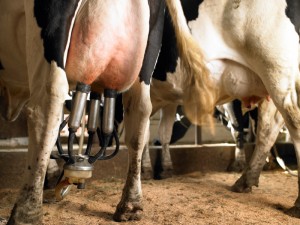The American Academy of Pediatrics has issued a policy statement warning against the consumption of raw milk and raw milk products by pregnant women and children. Many children and pregnant women have become seriously ill with bacterial infections directly linked to raw milk.
 The statement says, “raw milk and raw milk products from cows, goats, and sheep continue to be a source of bacterial infections attributable to a number of virulent pathogens, including Listeria monocytogenes, Campylobacter jejuni, Salmonella, Brucella, and E. coli O157. These infections can occur in both healthy and immunocompromised individuals, including older adults, infants, young children, and pregnant women and their unborn fetuses, in whom life-threatening infections and fetal miscarriage can occur.
The statement says, “raw milk and raw milk products from cows, goats, and sheep continue to be a source of bacterial infections attributable to a number of virulent pathogens, including Listeria monocytogenes, Campylobacter jejuni, Salmonella, Brucella, and E. coli O157. These infections can occur in both healthy and immunocompromised individuals, including older adults, infants, young children, and pregnant women and their unborn fetuses, in whom life-threatening infections and fetal miscarriage can occur.
“Efforts to limit the sale of raw milk products have met with opposition from those who are proponents of the purported health benefits of consuming raw milk products, which contain natural or unprocessed factors not inactivated by pasteurization. However, the benefits of these natural factors have not been clearly demonstrated in evidence-based studies and, therefore, do not outweigh the risks of raw milk consumption. Substantial data suggests that pasteurized milk confers equivalent health benefits compared with raw milk, without the additional risk of bacterial infections.” This statement is in line with a study by the Minnesota Department of Health, which found that 1 in 6 raw milk consumers get sick from that product.
In other words, the “natural or unprocessed factors not inactivated by pasteurization” are not what we drink milk for. Humans cannot use cow enzymes that are deactivated by pasteurization. And while pasteurization reduces the vitamin C level, for example, milk is not an important source of that vitamin. Comparing labels of raw milk and pasteurized milk directly shows the exact same levels of vitamin A, protein, carbohydrates, and calcium.
Before pasteurization in the 1920s, consumption of raw dairy products caused a significant proportion of foodborne illnesses among Americans. About 1 to 3% of all dairy products consumed aren’t pasteurized. From 1998 through 2009, raw milk caused 93 illness outbreaks, 1837 illnesses, 195 hospitalizations, and 2 deaths. And unfortunately, 60% of those patients were younger than 20 years. Among milk-associated foodborne illness outbreaks between 1973 and 2009, 82% were attributed to raw milk or raw milk cheese.
Consumption of raw milk is associated with a fivefold increase in toxoplasmosis among pregnant women, listeriosis associated with high rates of stillbirth, preterm delivery, and neonatal infections, and E. coli O157 disease and HUS.
Raw milk becomes contaminated in several ways. Direct contact with cow excrement, transmission of bacteria from bovine skin or hide, clinical or subclinical mastitis, environmental contamination, and contact with insects and animals.
Claims that raw milk is not associated with lactose intolerance is unproven. Links between pasteurized milk and autism, allergenic reactions, and asthma have not been demonstrated based on scientific data. And many studies have found that pasteurized milk contain equivalent levels of proteins, carbohydrates, calcium, vitamins, and enzymes as compared to raw milk.
The American Medical Association, the American Veterinary Medical Association, the International Association for Food Protection, the National Environmental Health Association, the FDA, and the World Health Association endorse consuming only pasteurized milk and milk products. The American Academy of Pediatrics encourages pediatricians to support a ban on the sale of raw milk and raw milk products.




